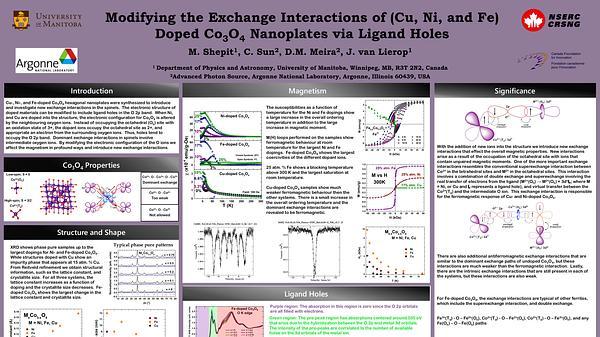Would you like to see your presentation here, made available to a global audience of researchers?
Add your own presentation or have us affordably record your next conference.
Iron oxide-based magnetic nanoparticles offer ample possibilities for a wide range of biomedical applications such as magnetic resonance imaging, hyperthermia treatment,
targeted drug delivery, etc. 1 Understanding the complex magnetic textures in the microscopic dimensions by tailoring the size and morphology of these multifunctional structures is of
utmost importance for controlled and optimized applications. The coexistence of multiple phases in these nanostructures provides an additional degree of freedom to tune their
functionalities. Despite extensive investigations on the magnetic properties of core-shell iron oxide nanostructures with different shapes, sizes and morphologies, limited studies are
available on the influence of phase coexistence on iron oxide nanocubes. Here we report on a comprehensive investigation of magnetic properties of multiphase iron oxide nanocubes with
different sizes ranging between 10-43 nm synthesized using a chemical decomposition technique.2 The exposure to air resulted in an α-Fe2O3 shell layer on the surface of the nanocubes,
with the core formed of a possible composite mixture of Fe3O4 and FeO phases. Magnetometry indicative of the Morin (α-Fe2O3) and Verwey (Fe3O4) transitions at ~250 K and ~120 K,
respectively identify the two phases, while FeO, the third phase is identified through XRD and Raman spectra. The smaller nanocubes up to average size 24 nm showed the exchange bias
(EB) effect below 250 K with 15 nm showing the strongest. The EB effect is attributed to the strong interfacial coupling between the ferrimagnetic (FiM) Fe3O4 phase and
antiferromagnetic (AFM) FeO phase. The Fe3O4/α-Fe2O3 (FiM/AFM) interfaces are found not to contribute to the EB effect. 3 Our results have enabled us to view the basis of the EB
effect in multi-phase iron oxide nanosystems and could open up possibilities to design tunable exchange-coupled nanomaterials with desirable magnetic properties for biomedical and
spintronic applications.
References:
1 C. S. S. R. Kumar and F. Mohammad, Adv. Drug Deliv. Rev. 63, 789 (2011).
2 H. Khurshid, S. Chandra, W. Li, M. H. Phan, G. C. Hadjipanayis, P. Mukherjee, and H. Srikanth, Journal of Applied Physics, Vol. 113 (2013).
3 S. B. Attanayake, A. Chanda, R. Das, M. H. Phan, and H. Srikanth, AIP Adv. 12, 035136 (2022).
